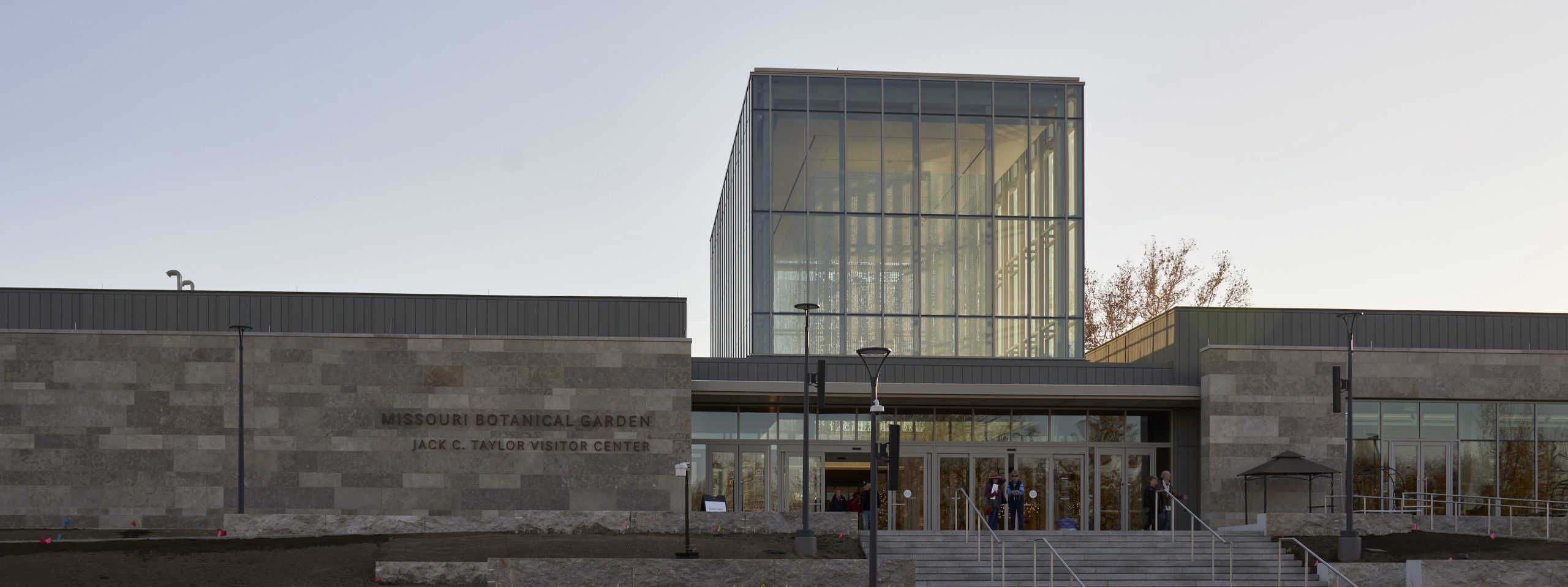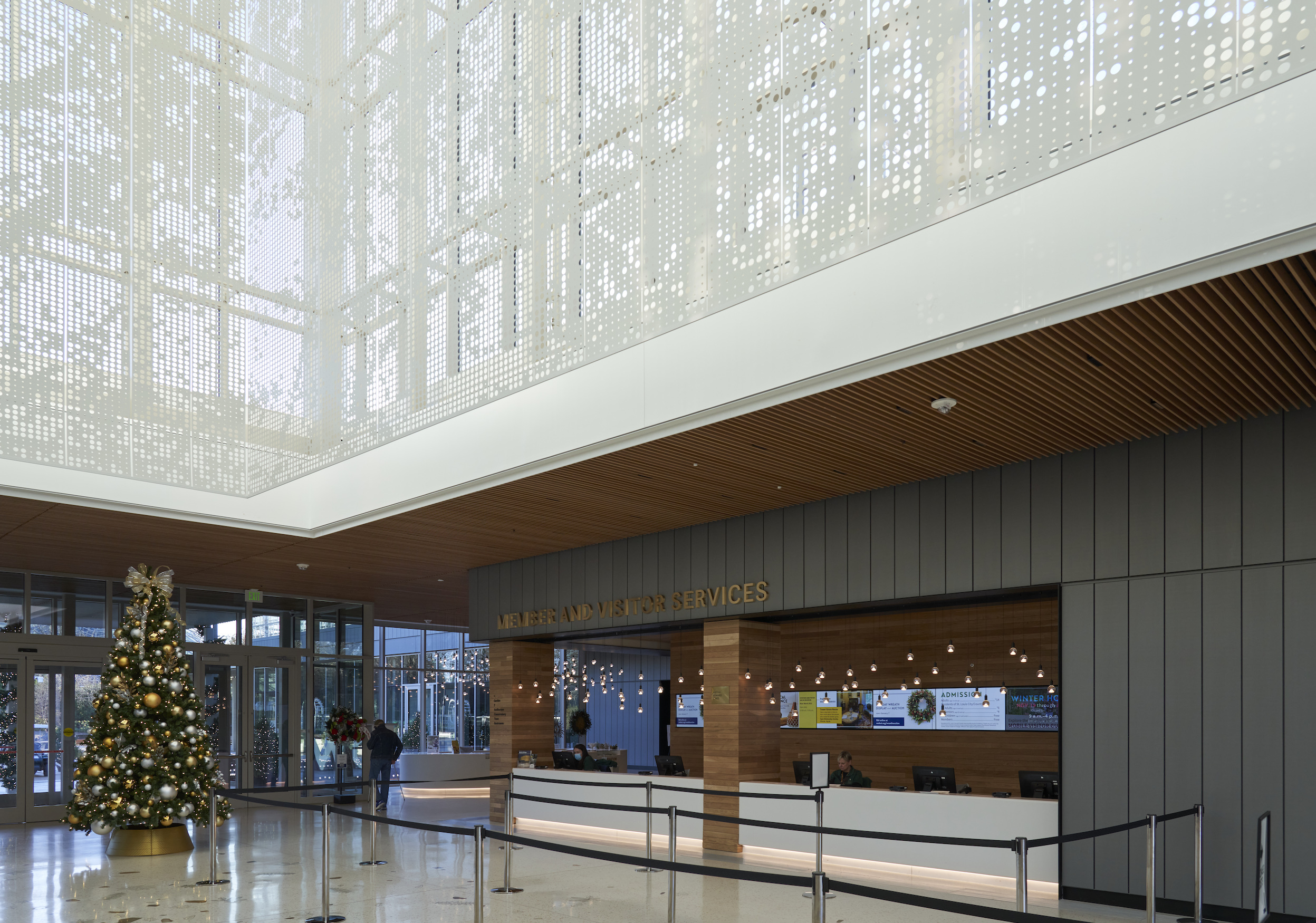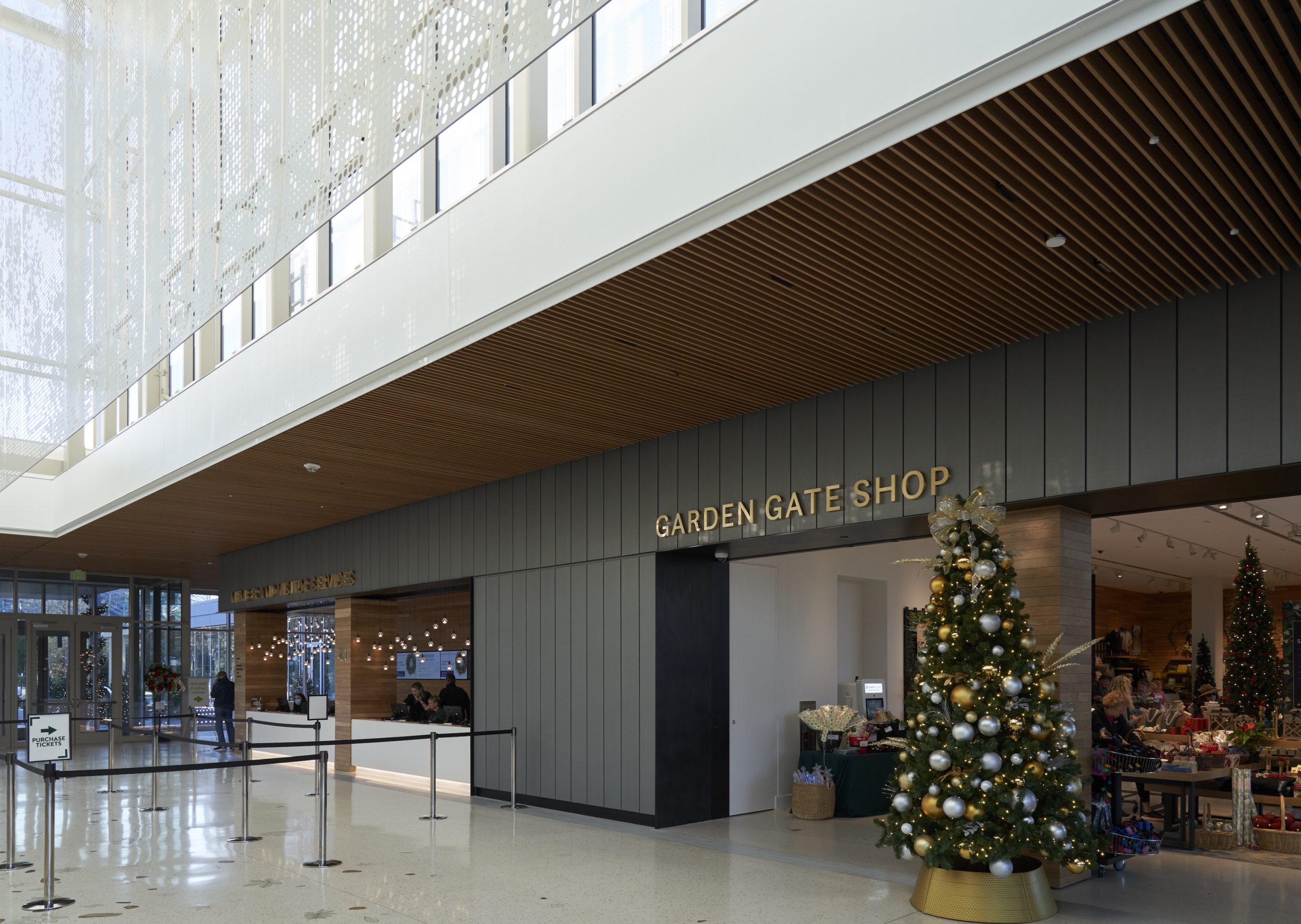
CASE STUDY
Supplementing Sustainability at Nation’s
Oldest Botanical Garden
The Challenge
One of the nation’s oldest botanical gardens in continuous operation, the Missouri Botanical Garden was founded in 1859 and is listed on the National Register of Historic Places. When the garden decided to transform its visitor center that hadn’t been updated since 1982, officials earmarked $100 million in private donations for the project. The vision was for the Jack C. Taylor Visitor Center to provide guests with a larger, accessible, and sustainable building with clear views from the entry to the garden. The 90,000-square-foot visitor center would also feature several new amenities, including the Emerson Conservatory, Sassafras Cafe, a new gift shop, the William T. Kemper Lobby, the Lelia J. and David N. Farr Auditorium, and the Bayer Event Center.
Architects on the project sought to design a building that fully embraced the concept of sustainability. The goal was to deliver an enhanced guest experience, which included ensuring the building was properly insulated and would remain comfortable for visitors. Choosing the right insulation partner was a key component of that mission.
Niehaus Building Services, LLC, an interior specialties contractor on the project, had collaborated with Goley Insulation on several large-scale commercial projects over the years. Niehaus saw Goley as the optimal insulation expert and building science consultant for the project.

The Goley Solution
To ensure that the visitor center would serve as a high-performance, sustainable structure over the long term, Niehaus installed a variety of insulation products, including:
- 2,000 board feet of spray foam applied from the interior and exterior.
- 15,000 square feet of mineral wool insulation.
- 60,000 square feet of interior sound batt insulation.
Best practices in construction, design, and operation to achieve optimal use with minimal environmental impact were all incorporated into this project. For a large-scale structure such as this, a trustworthy insulation contractor and attention to detail were critically important to ensure the building delivers lasting thermal performance.
Given this project’s scale and demanding timeline to open on time, Goley needed to properly forecast both the material and labor needs. Supply chain shortages and labor disruptions caused by the COVID-19 pandemic during the construction window were a persistent challenge. However, the Goley team maintained a constant line of communication, successfully adhering to the aggressive project schedule.
“We relied on the Goley team to get us materials and provide support when we needed it, and they delivered,” said Jake Whittle, President at Niehaus Building Services. “Construction during the peak phases of the pandemic presented countless challenges, so it was critical for us to partner with an insulation provider that would help us keep pace with the project timeline, stay within budget, and ultimately deliver a high-performance thermal insulation solution for the botanical garden visitor center.”
The Goley team also upheld rigorous safety standards on the job as crews often had to apply product at elevated levels using lifts and from the roof. The team performed thorough quality checks throughout the installation process to ensure accuracy and safety on the job site.

A New Chapter
The Missouri Botanical Garden has a vibrant history and serves as popular regional attraction. The updated visitor center ushered in a new chapter for the garden, and Goley’s expertise and responsiveness as the designated insulation contractor ensured that the building met 21st-century sustainability standards and the latest energy code requirements. Goley Insulation successfully met the client’s needs and timeline during a period when circumstances and materials were largely unpredictable.
Bidding on construction of the Jack C. Taylor Visitor Center began in 2020. The insulation work commenced in the fall of 2021 and was completed in the summer of 2022. The facility officially opened in August 2022.
Stats
PRODUCTS
Spray foam (2,000 board feet)
Mineral wool insulation (15,000 square feet)
Interior sound batt insulation (60,000 square feet)
# CREW MEMBERS
11 crew members
TIMELINE
Fall 2021 through summer 2022